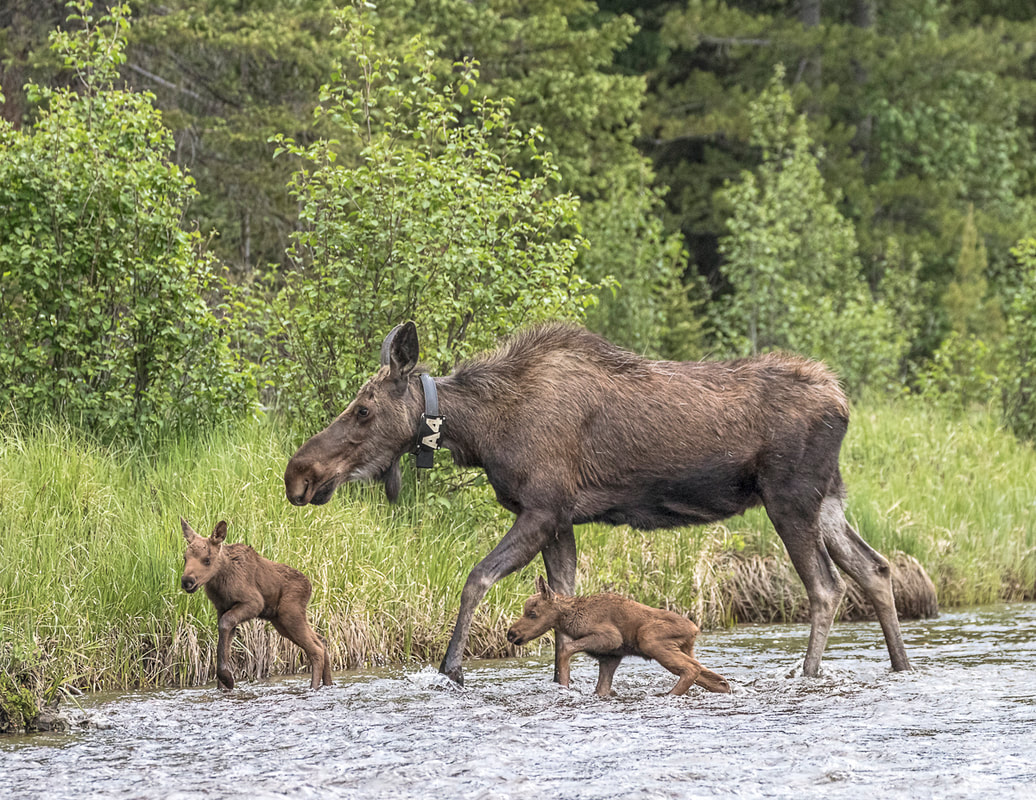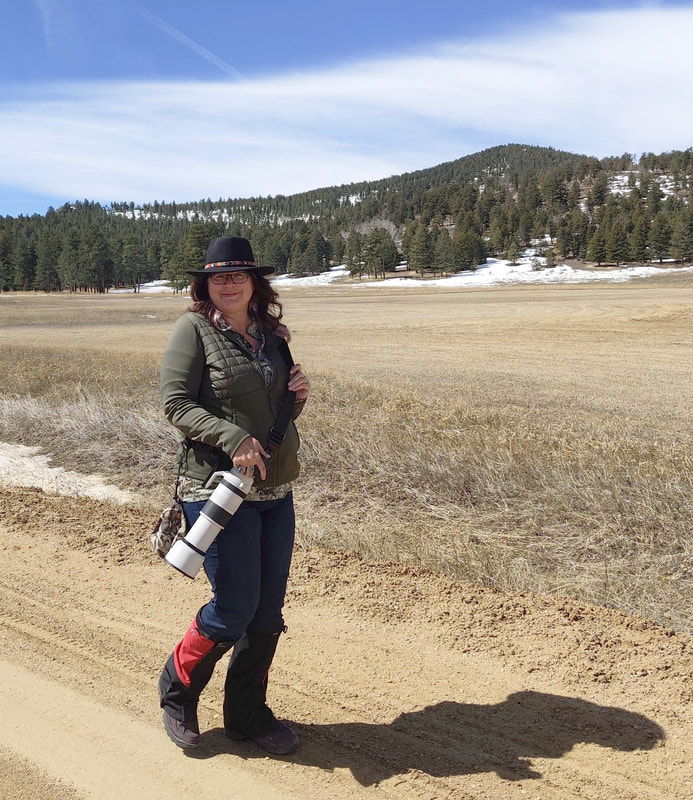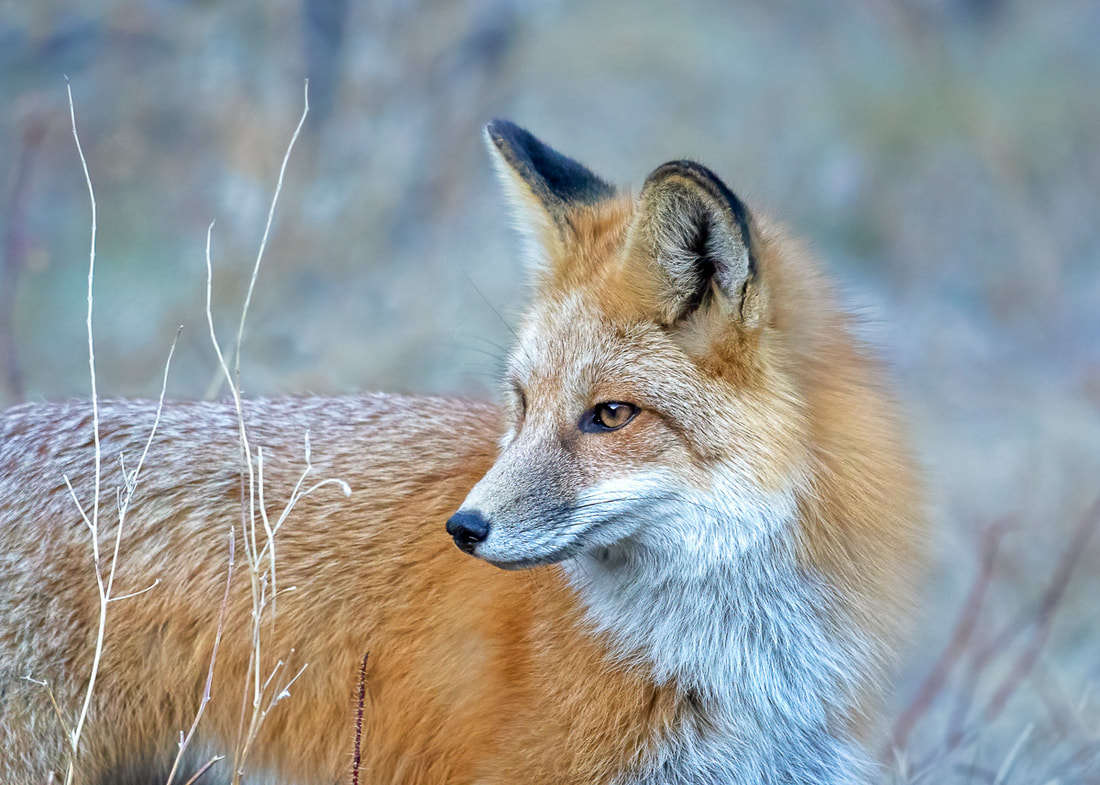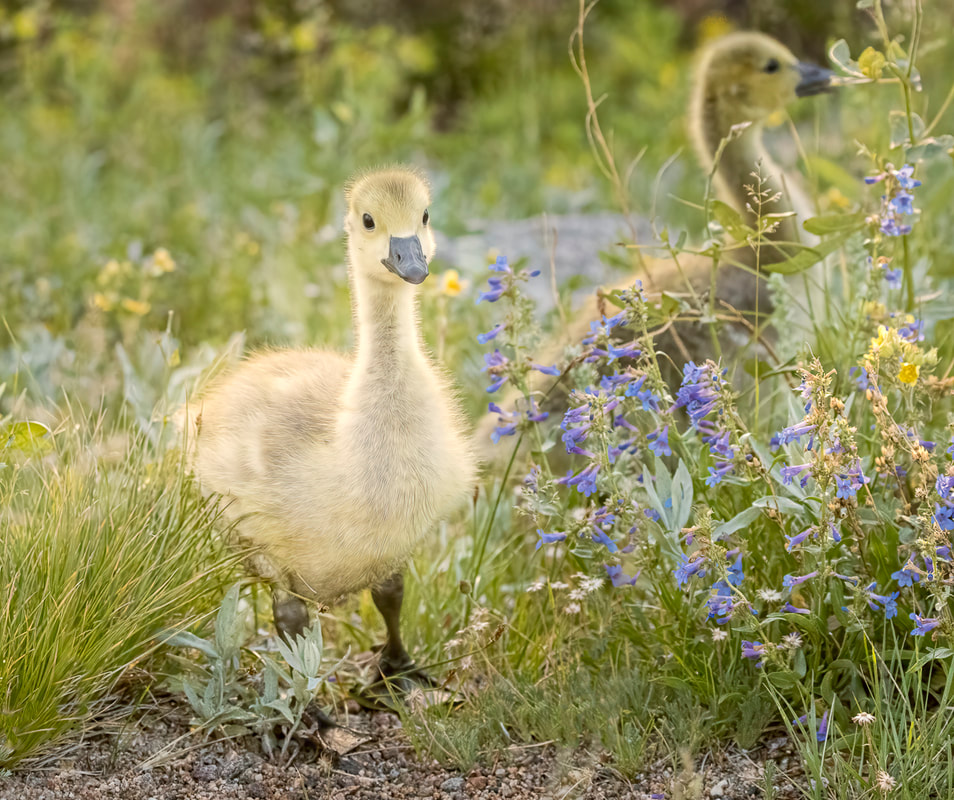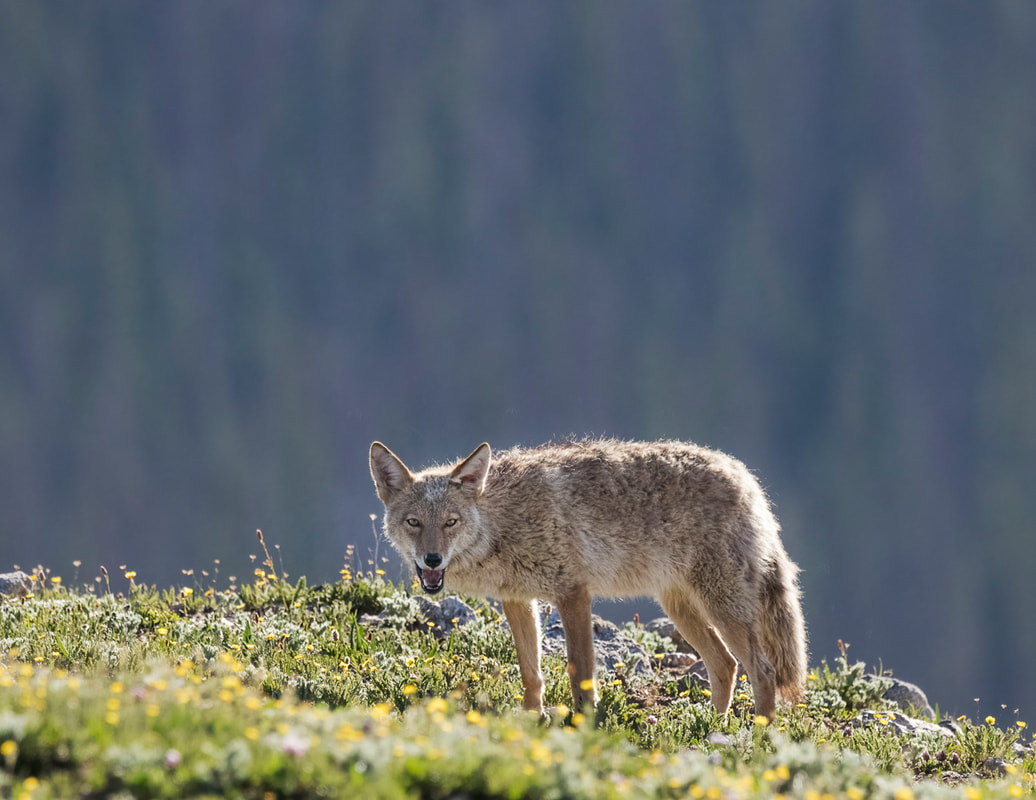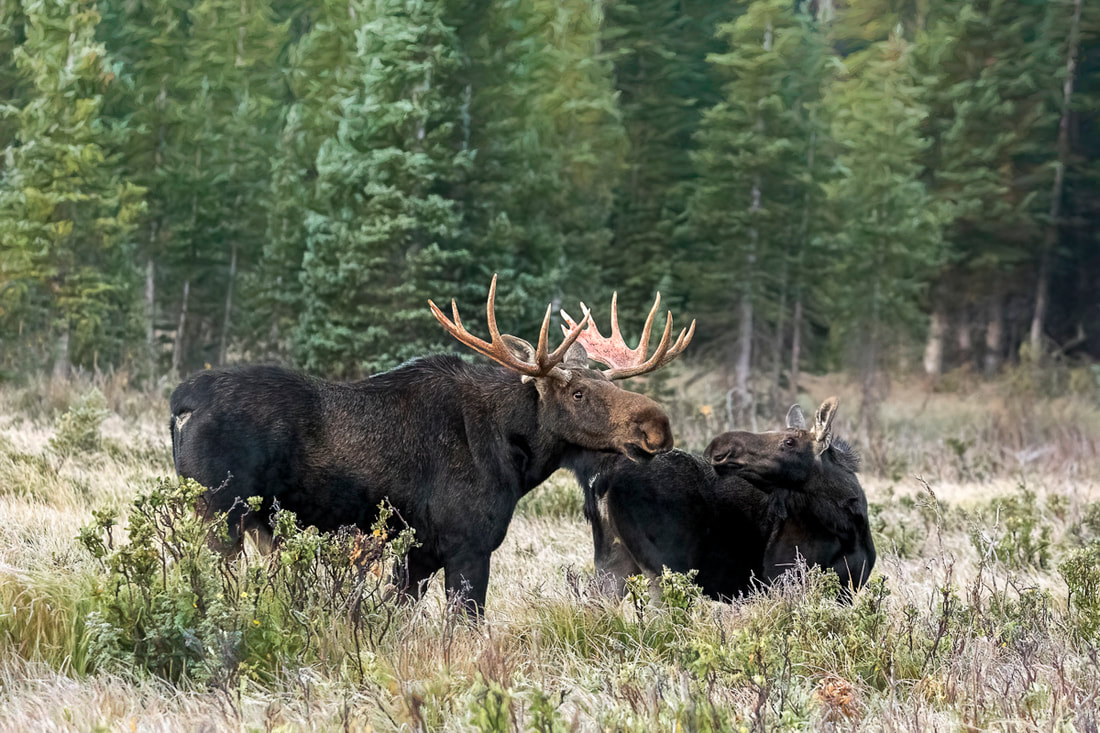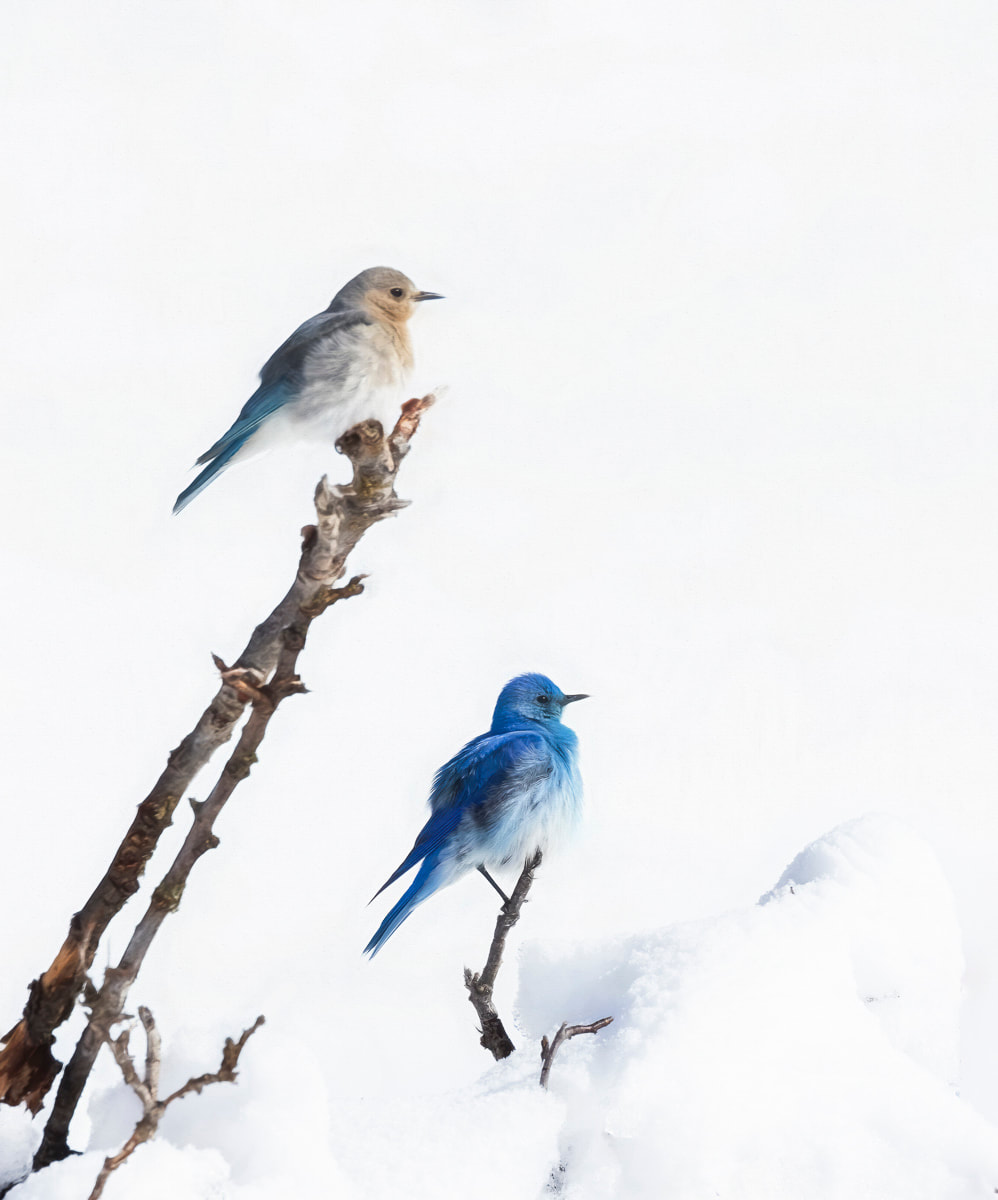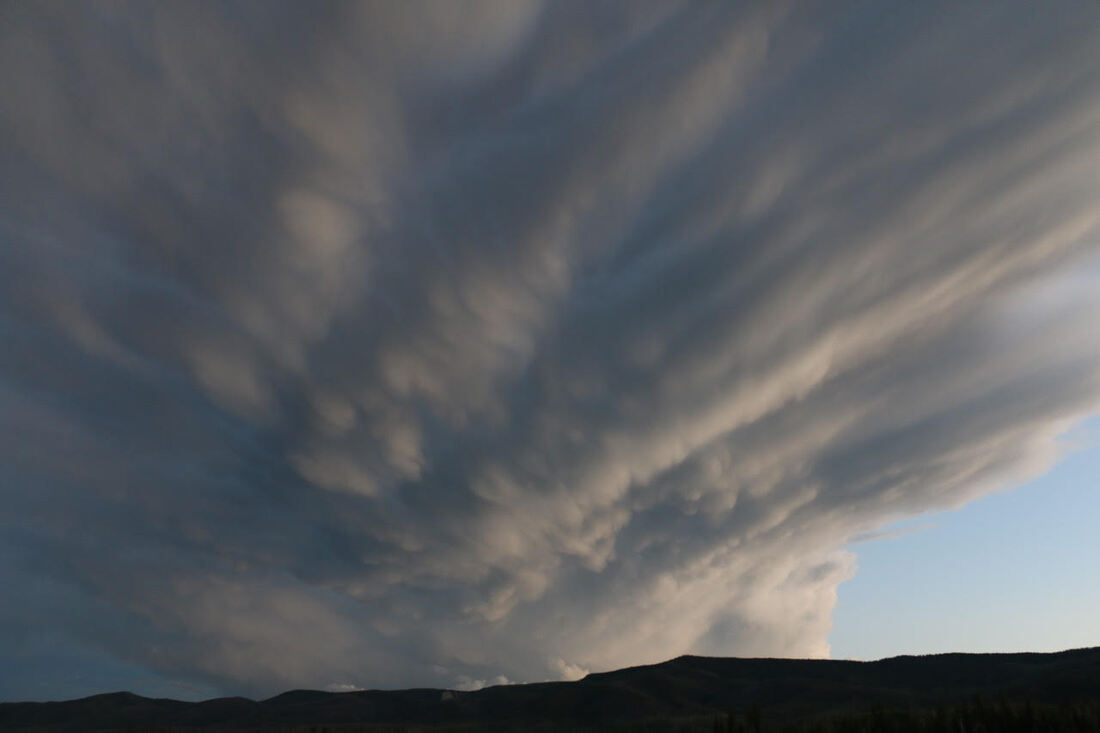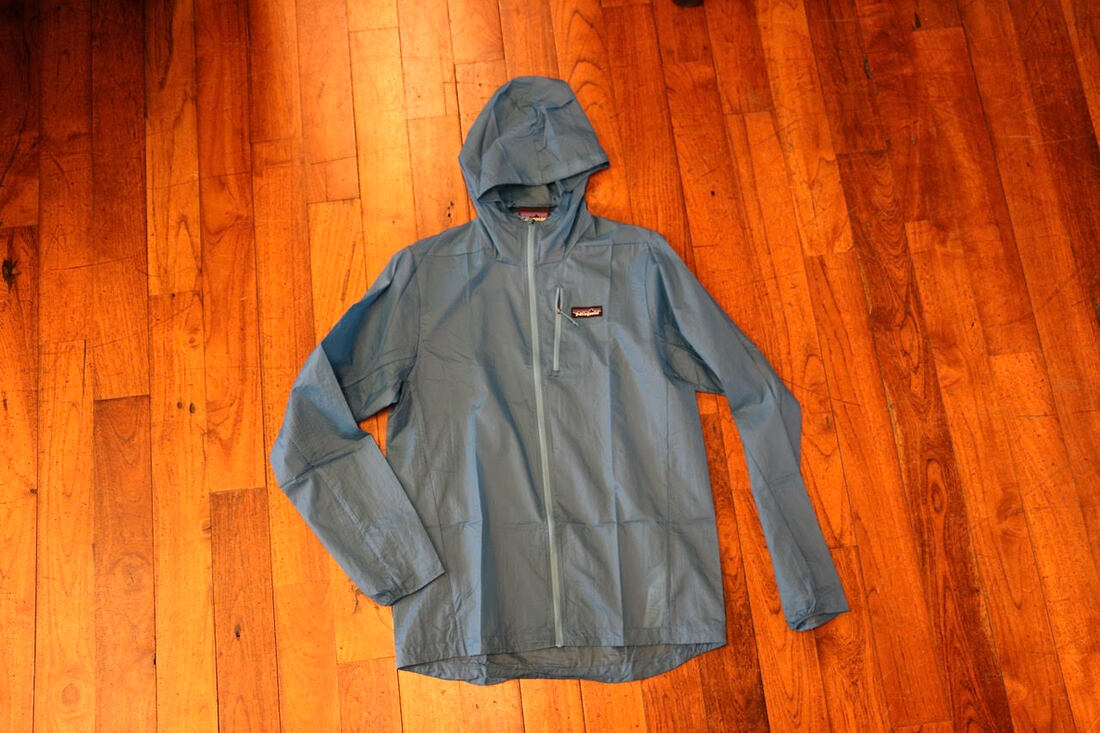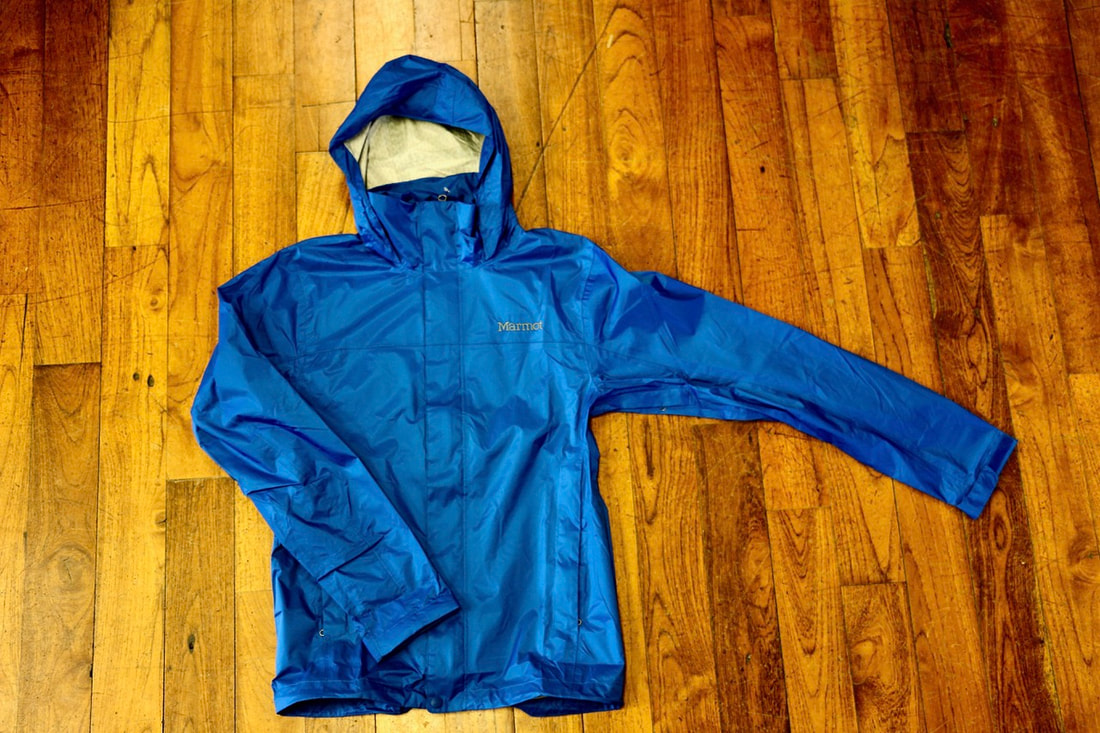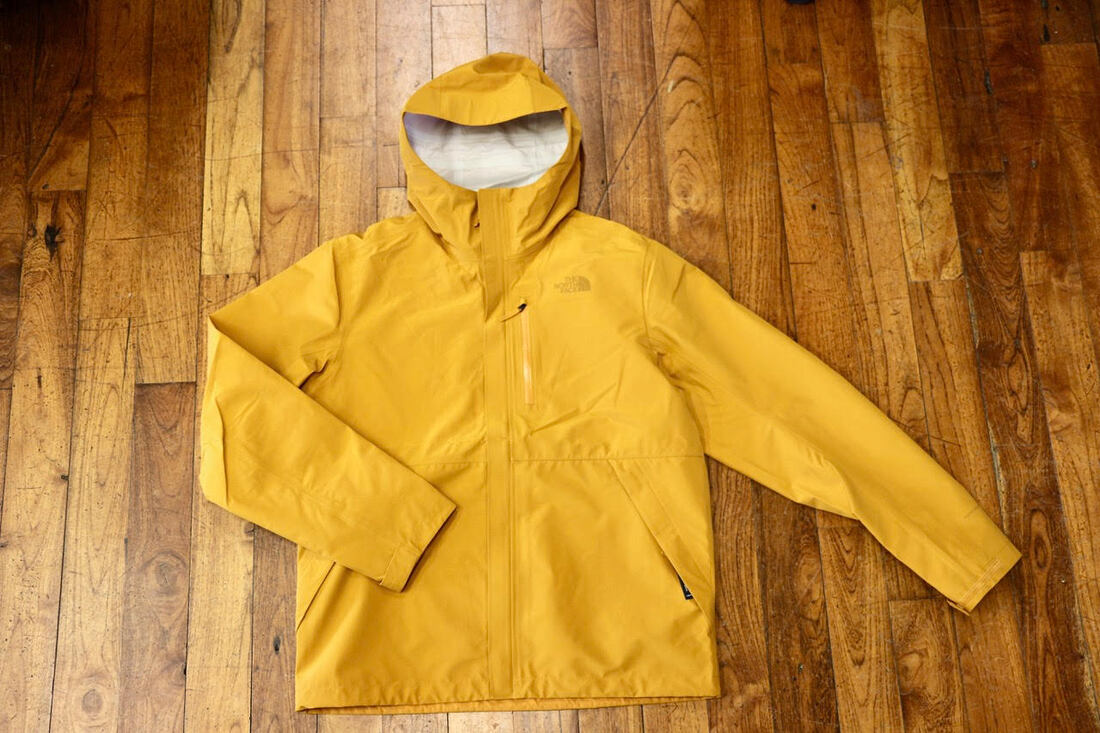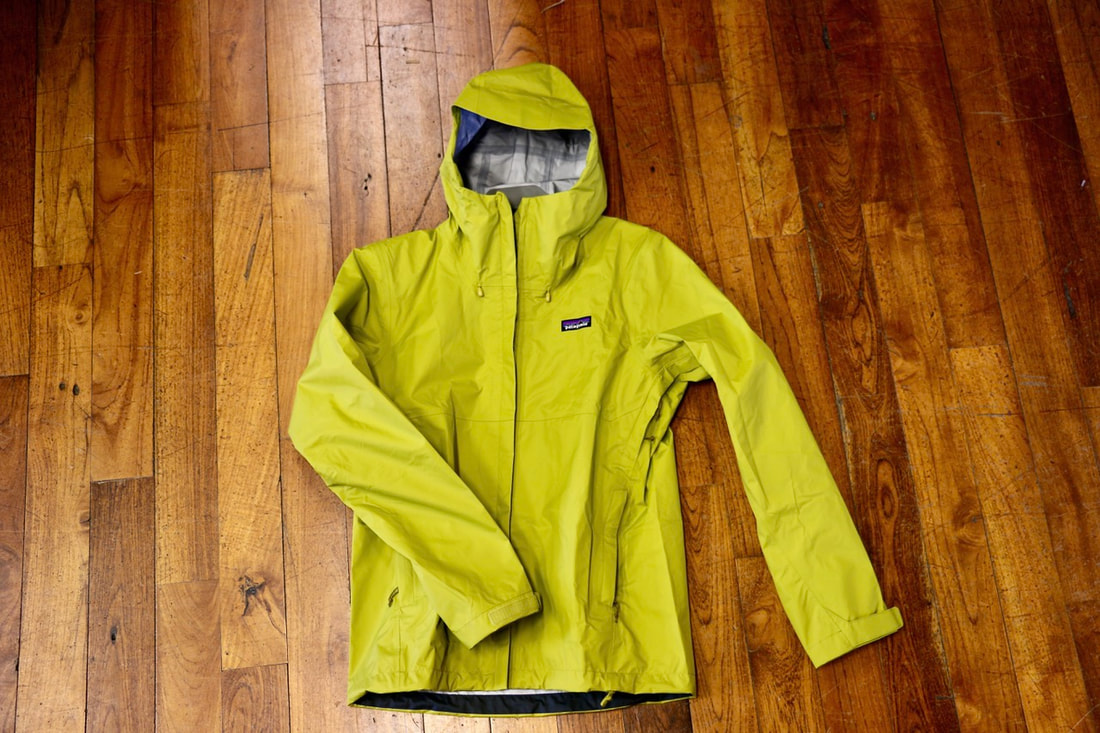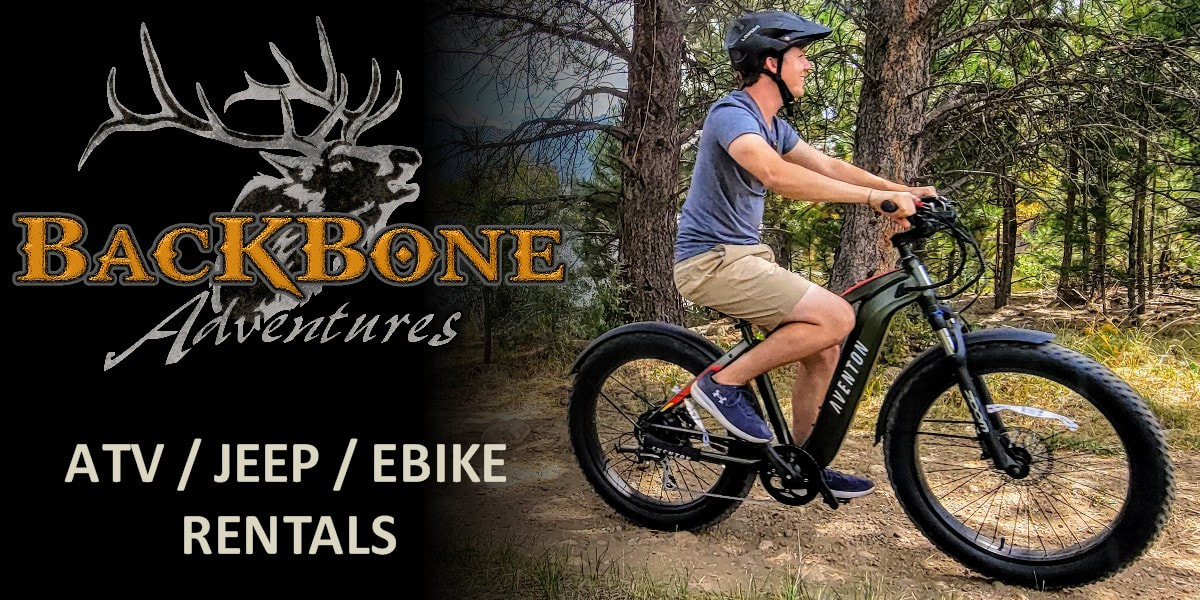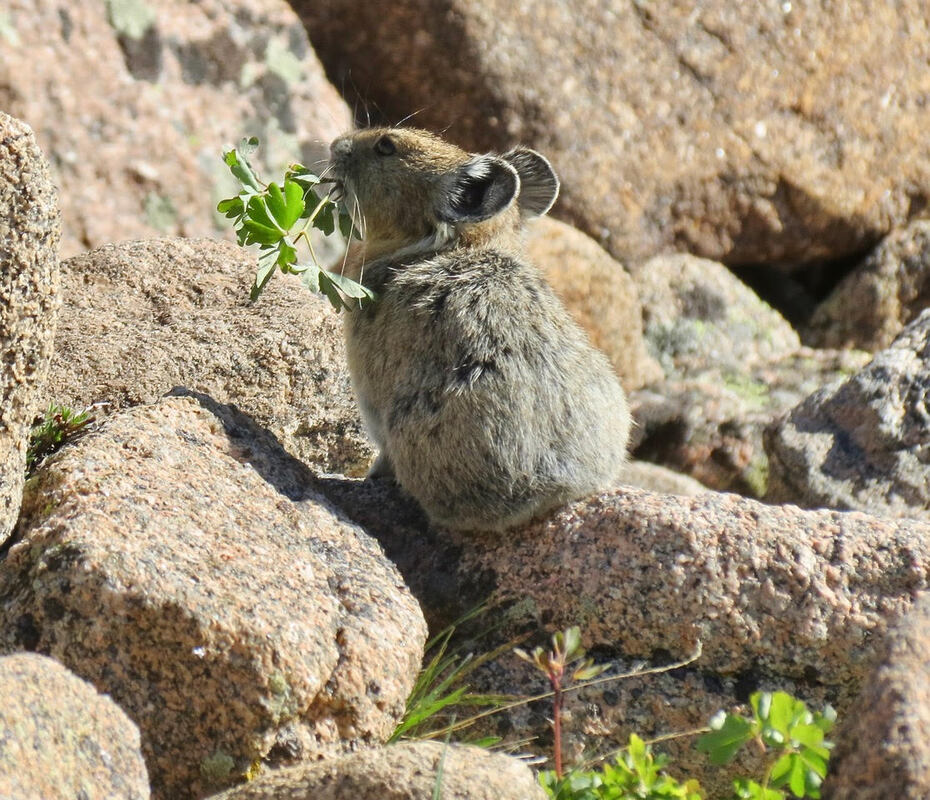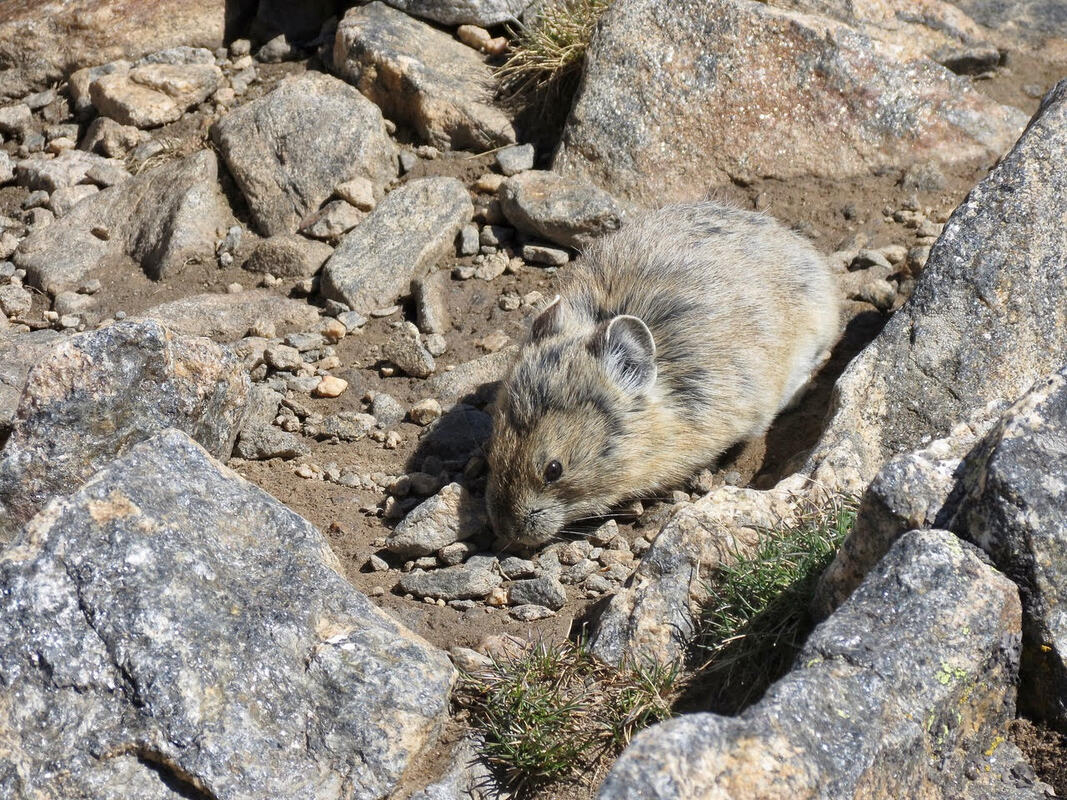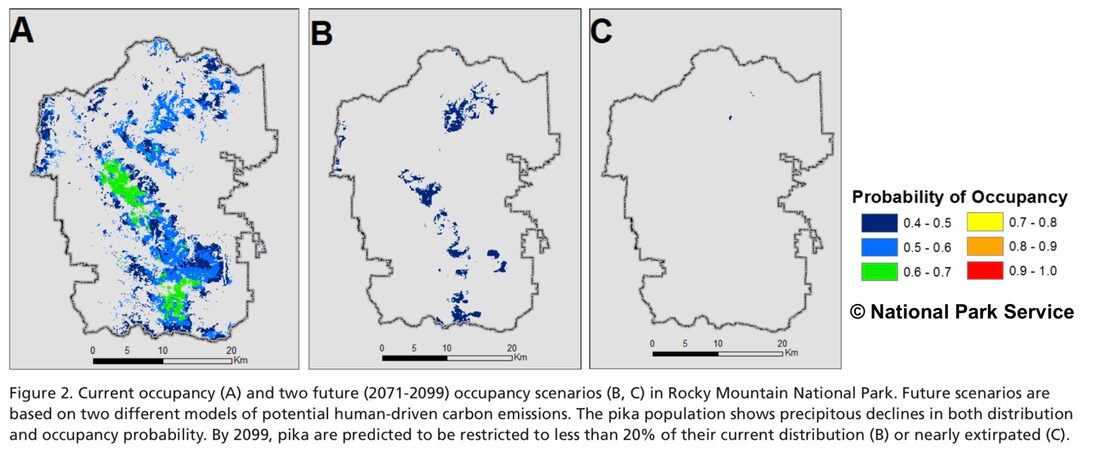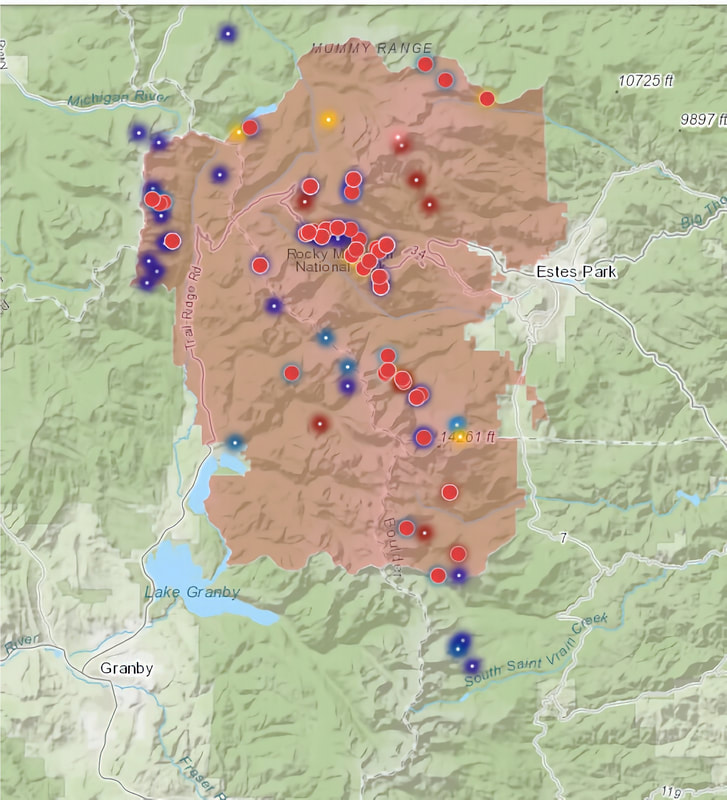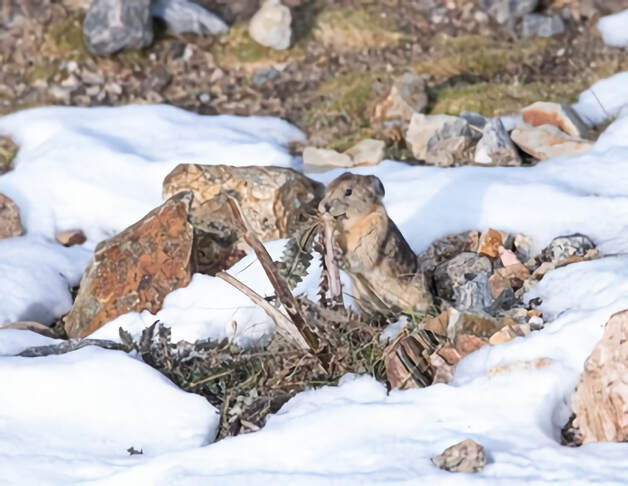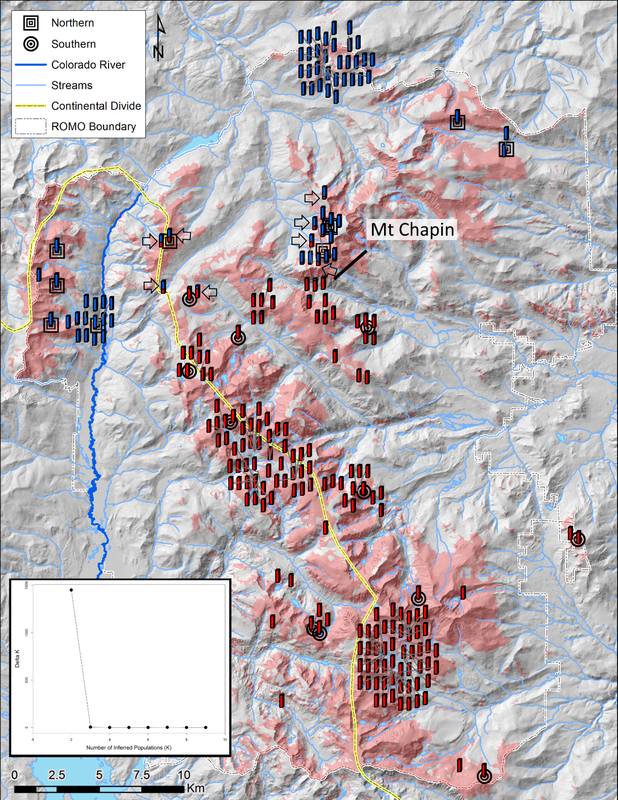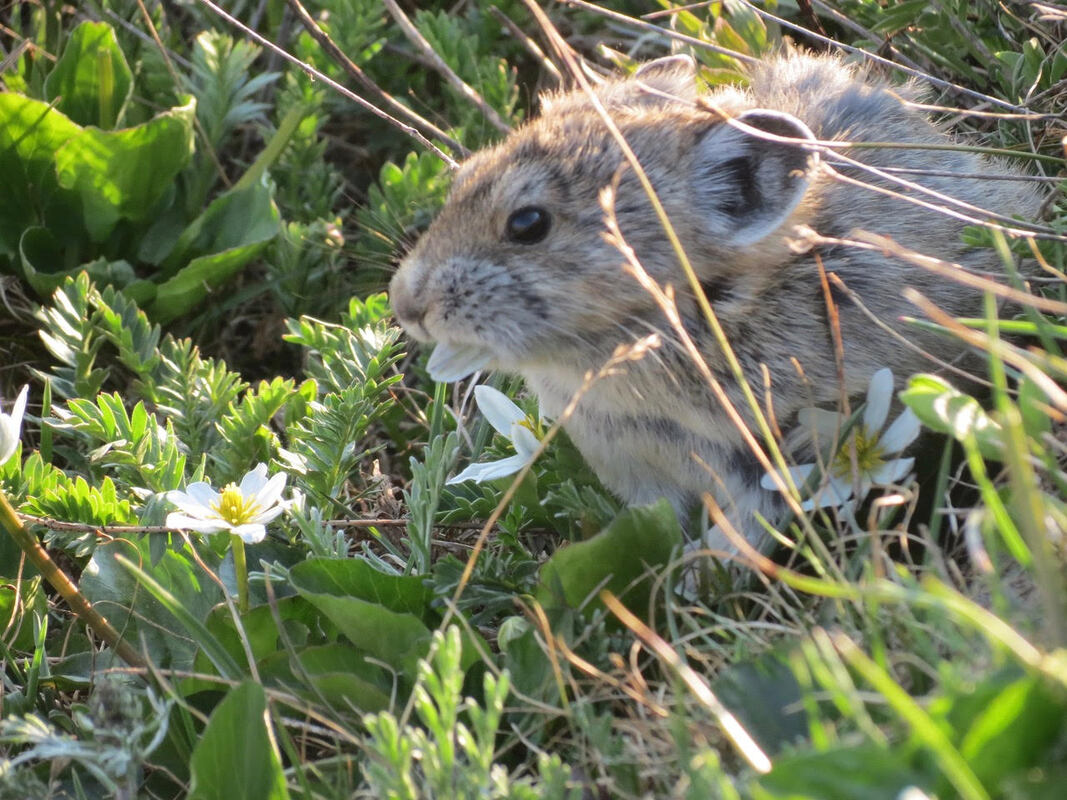The Photography of Deena Marie CzechBy Barb Boyer Buck “My job as a wildlife photographer is to leave wildlife wild… just as I found them," said Deena Marie Czech. It's an engrossing, time- consuming activity that keeps her very busy most early mornings and at dusk in Rocky Mountain National Park. Her goal is not to “capture” wildlife in a quick photo that can be taken from the car or jumping out to get a quick shot of a herd of elk; Deena draws on her lifetime of observing animal behavior and incredible patience in her photography. Deena was born in Minnesota but has made the Tahosa Valley home for the past 30 years. “I grew up 'Midwest practical,' with parents that had a low threshold for goofing off, arts, or creativity. When I moved to Allenspark, it was always a challenge to stop doing all the responsible things and just go play in the woods. “Well, that's over! Let the dust bunnies and dishes pile up cause I'm going to go look for river otter.” She learned tracking skills from her father; family “vacations” were centered around the hunting seasons he participated in and always involved hiking and camping. She's very comfortable in the woods. “When the moose first came to Allenspark around 1999, I had only a tiny point and shoot camera,” she explained. “I had a keen interest in moose so in between my responsibilities, I would sit and watch them. Any picture I got was terrible. in 2000, I discovered what is now commonly referred to as a (moose) nursery area. “Mamas would come and have their babies and remain for on average three-four weeks before moving on. Many folks know the location in Rocky that is on the West Side, but this discovery was in my back yard and only mountain folk who knew how to keep their mouths shut knew about it. Sadly, I still couldn't get a decent image to save my life. So, every year I would invest in a little bit better gear. But it, and I, failed miserably,” she said. Over the years, she began investing in better and better equipment and attending photography workshops. “In 2013 I was spending time in New Mexico and a wonderful man named Dennis Chamberlain told me about the Lens Enchantment Camera Club. Everything changed. Wonderful mentors like Keith Bauer who is brilliant at teaching workflow, gear, and all that yucky geeky stuff helped me tremendously and still does. The camera club also had casual critique nights where members would submit images to be critiqued in a helpful, kind, and humorous way by LeRoy Perea. “All of these folks with their love of photography and willing to mentor people helped me to finally get a glimpse at the possibilities for my photography. It was a long road to get all the components necessary for some solid photography, but I'd say in 2019 the gear end of things finally came together allowing me the ability to not be held up by lesser quality gear.” She's held several occupations to support her passion. She's been the owner and operator of a critter sitter/home check business for 17 years. “This is hard work come winter when you have many clients first thing in the morning, often starting with a snowshoe into property to feed horses before the sun is up,” she said. “It's a privilege to be trusted by so many to take care of what is so very important to their hearts.” She also runs a wholesale business, marketing merchandise for tourism and mountain living and served 15 years on the Allenspark Fire Protection District. “I still hate driving big trucks,” Deena said. “Small community fire departments are challenging because you often know the person affected by an emergency. But that that same familiarity also allows you to bring their groceries home after they crash a car or to take care of their animals when an unexpected emergency arises. “It's aways an honor to respond to any call to serve.” Deena is also very involved with dog rescue work. She's fostered 20 dogs for different rescue groups and volunteers in numerous ways to their efforts. “Giving pups a soft place to land is a privilege and finding those pups a perfect home is magic,” she said. She plans to stay involved in this type of work “fur-ever.” Photography is not just an occupation for Deena, it has driven her behavior and created friendships over the decades. She lives near Wild Basin, once considered “the back door of Rocky Mountain National Park” by the local “mountain folk,” and has seen that area's quiet, pristine wilderness change over the years as Rocky has become more popular. “Even though those days will never return it still is my happy place,” Deena said. “When hitting a trail, I can always see and hear friends, family, and lovers that shared that trail with me in the past. I need only to look at the bridge and see a young Paul catching a brownie (trout). Mike and I getting lost in the willows while wearing the heaviest waders ever made. Having to dive hastily (and with no grace at all) off a trail as a bear came running straight at a couple of us out on an evening walk. And how we laughed for ages about it. “The time that Ken yelled, ‘STOP!,’ and jumped out of my car to run over to some wood lilies. They would be the last ones he ever saw. I only need to glance in the area of an old great horned owl nest where Kathy and I would sit and watch the silly owlets while we gossiped about the day. Her giggles and 'never-got-over-the-70s hairstyle' foremost in my mind's eye. “The animals I photograph are amazing and I am rich in blessings to be able to do so. But for me, it's the pictures in my head, and not my camera, that makes Rocky so special to me.” Her advice to others seeking the perfect wildlife shot is simple. “Run your own race,” she said, “and simply mind your manners, and your impact. “It's so easy to look at someone else's work and think they are better or that they are worse than you. Neither is true; you are only at different stages. If you love photography, then your work will continue to evolve, and you will create your own style. Many things need to come together for a successful wildlife image in an environment that you have no control over. It can be frustrating, so it is hope you lean into. Hope that today is your day that everything lines up and the magic will happen,” she said. While she continues to “hunt” the perfect wildlife shot while not compromising the animal's natural behavior, she is exploring new avenues in her craft. “My choice currently is to not do straight photography. Rather, I love exploring the computerized dark room named Photoshop that Ansel Adams started with his bold adventures and unconstrained exploration of his dark room. Most of my images you will clearly see my own experimenting and play but on occasion I can evoke a bit more subtly. “I believe that people save what they love. If an image or a story can facilitate a connection to wildlife for someone then that is the best I can hope for.” To see more of Deena's photography, visit the Distant Harbors Gallery in Allenspark, or on instagram https://www.instagram.com/wild_basin/ 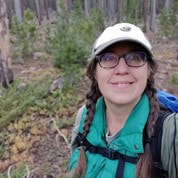 Barb Boyer Buck is the managing editor of HIKE ROCKY magazine. She is a professional journalist, photographer, editor and playwright. In 2014 and 2015, she wrote and directed two original plays about Estes Park and Rocky Mountain National Park, to honor the Park’s 100th anniversary. Barb lives in Estes Park with her cat, Percy.
0 Comments
Every day can be a rainy day in Rocky this time of year Story and photos by Murray Selleck, HIKE ROCKY’S equipment specialist Editor's note: Murray's recommendations are based on his decades of experience in the outdoor clothing industry and neither HIKE ROCKY magazine or the author received compensation from the brands recommended. One of the most exciting things about rain gear is the fact that if you are wearing it, most likely it's raining! In the arid, drought-stricken west, a rain shower, no matter how short lived, is a wonderful thing. However, once the summer monsoon kicks in with its unpredictable drenching afternoon downpours, rain can become your bane. The monsoon can be a gully- washing regrettable experience if you're caught out in the right place at the wrong time. Most of us who love exploring Rocky Mountain National Park and the surrounding mountains have experienced a surprise thunderstorm on a forecasted bluebird day. We might have said to ourselves that a quick jaunt up a trail will be no big deal. A pack loaded with the essentials won't be needed and a simple water bottle will get me there and back. And about when you reach the turn-around spot, or even a little beyond, the skies darken, the wind begins to gust, and a bolt or two of lightning has us thinking, “What was I thinking?” What to Take: Waterproof? Water Resistant? Windproof? Oh my! A waterproof jacket or even a paper-thin windbreaker can save the day. That is to say, if we have enough foresight to take a shell jacket along with us! From short scoots up a familiar trail to day hiking and backpacking to through hiking, which kind of shell you want to bring along depends on trip duration, your budget, jacket features, and your area's most common climate. The conditions: Intermittent rain showers, curtains of virga in the distance, shifting shafts of sunlight spotlighting the valleys below, cool breezes and comfortable temperatures; it’s a perfect day for a day hike. Under these conditions, a lightweight water-resistant shell that doubles as a windbreaker can potentially provide enough protection on this kind of summer day. If you properly layer underneath, it with a tech t-shirt or synthetic or wool next-to-skin layer, even if a shower wets through the jacket to these underlying layers, you can stay comfortable. Mind you, these shells are fine for quick, fast-moving, light showers and not much more. These thin shells serve better as windbreakers than effective rain gear. The jacket's material and tight weave creates the water resistance and wind barrier. Usually there isn't even an additional water barrier treatment. As I said, during a brief shower they can work great, they're quick drying, and they are enough to get you by. Another benefit to a windbreaker shell is how much warmer they can keep you when cool high-altitude winds are blowing. The shell will effectively trap more body heat around you leaving you the perfect temperature! You roll the dice with this style of jacket. Hit the trail and take your chances when it comes to the weather. Bluebird, showers, or come what may! The conditions: drenching downpours, heavy monsoons, mountains peaks disappear behind thick curtains or rain, gobs of grapple, trails turn into creeks of running water, unforgiving hail, thunder, and lightning… You’re in the thick of the storm now! You had better armor up when Mother Nature decides to let loose. Waterproof/windproof/ breathable jackets and pants provide the best protection and comfort from hard rains and monsoonal downpours. Along with being waterproof, breathability is an equally important feature. It's easy to make a jacket waterproof but to make it breathe effectively is another. If you are hiking, running, or climbing in a rain storm, the heat you generate will quickly exceed what the breathable laminate can expel. Suddenly you are surrounded by a tropical climate trapped under your jacket and you're getting wet from both the outside and in! I struggle with reduced hearing and vision when I have a hood up over my head. Hearing the sounds of the mountains are reduced and I miss hearing the nuances of the forest. Also, even with the ability to adjust a hood back or forward and snug it to your head shape, peripheral vision can be reduced. I've had hoods that when I turn my head to one side or another my hood doesn't! I wind up looking straight into the hood and not out to the side where I want to look. Don't read too much into my hood dilemma. Hooded rain jackets are far more popular than jackets without. My rant should only serve as a buyer's guide as you try jackets on for fit in your favorite shop. Check out all the features a jacket offers and see if they make sense to you. Waterproof technologies There are two main technologies that outdoor specialty manufacturers use to produce their waterproof garments. DWR (Durable Water Repellency), membranes like GoreTex, or a combination of the two. DWRs are a spray-on layer that can be applied to either the outside of the jacket or as a protective layer over the laminate on the inside of the jacket. DWRs are less expensive to produce so a jacket with this kind of waterproofness is less expensive to buy. Membranes are a waterproof/breathable layer bonded or laminated to the jacket's fabric. They are more durable than a DWR treatment. GoreTex is the most common and recognizable brand in this category but excellent competitors also exist. eVent, OutDry Extreme, Pertex Shield, and others keep the category and prices competitive. A combination of these technologies let manufacturers build 2, 2.5, and 3 layer options. Waterproof/breathable/windproof: bottom line The outdoor specialty industry has no lack of manufactures or choices. There is an abundance of excellent rain gear available competing for your dollars. Gear reviews, online consumer reviews, and manufacturer's highlights all serve a purpose but the bottom line will always be how a specific piece of gear works for the individual who is using it. Read all about it. Learn both how a product excels and what its limitations are. Balance those out to see what fits! In the meantime, along with hiking, climbing, and trail-running in the rain, with the right rain gear choice you can add chasing rainbows and singing in the monsoon! 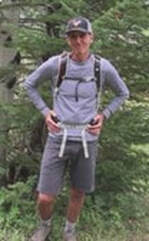 Murray Selleck moved to Colorado in 1978. In the early 80’s he split his time working winters in a ski shop in Steamboat Springs and his summers guiding on the Arkansas River. His career in the specialty outdoor industry has continued for over 30 years. Needless to say, he has witnessed decades of change in outdoor equipment and clothing. Steamboat Springs continues to be home. How climate change is impacting pika populations in Rocky by Barb Boyer Buck The tiny American Pika, one of the most daring and weather-hearty animals in Rocky Mountain National Park, is exhibiting declining population numbers all over Colorado due to climate change. Dr. Chris Ray, a research associate at the University of Colorado, has been studying the American Pika for several decades. In February of 2022, she and a researcher from Northern Michigan University, Hilary Rinsland, presented the most recent findings of their work and the Colorado Pika Project in the Science Behind the Scenery seminar series. The series was sponsored by Rocky and the Rocky Mountain Conservancy and ran from mid-February to mid-March of this year. “We started surveys of the American Pika in Rocky Mountain National Park ten years ago,” Dr. Ray said during her presentation in the series. “We focused on pikas because they have several traits that make them a sentinel (species) for the effects of climate on wildlife. “It’s relatively easy to determine if they are occupying any given spot. Also, they inhabit rocky areas that humans tend to avoid; so, compared to many other species they should be less affected by human activities, other than human-caused climate change.” Pikas are particularly climate-sensitive, needing access to cool climates in the summer and protection from sub-freezing temperatures during the winter time, she explained. The American Pika, Ochotona princeps, is native to Rocky Mountain National Park, and other high- elevation locations in the state. They occupy talus, or scree-slope, habitats above treeline. Busily gathering greens all summer, pikas are the tiny animals in the rabbit family who are often heard chirping communications to their compatriots. Pikas create hay piles upon which they feed all winter, while nestled underground under rocks and a thick layer of snow. They are an incredibly charismatic species, with big ears (similar to a famous cartoon mouse), and they need our help. “By mid-century, population would dip below 50% of occupancy and that population would start to contract dramatically under business as usual,’ (or, no changes in greenhouse emissions),” Dr. Ray said. “The changes in population are based on predictions of the above-surface climate, but pikas spend a lot of time under the surface. So, we are monitoring all their micro-habitats, too, hopefully to support our understanding of flora and fauna changes in relation to pikas,” said Dr. Ray. “We couldn't do all this monitoring without the help of the community,” she said, citing the “impressive community science project, the Colorado Pika Project.” This project was created by the Denver Zoo and Rocky Mountain Wild, which manage the volunteer efforts of monitoring the American Pika not only in Rocky, but also along the Front Range and in the White River National Forest. “In 2021, 56 volunteers surveyed 72 randomly-selected plots,” said Dr. Ray. “Twenty-four plots are surveyed every year and additional plots are surveyed in even or odd years so that more of the Park can be surveyed with the limited pool of volunteers. “The plots are small but that’s important because it takes a while to survey the 3D plot for pika science.” Volunteers look for pikas, listen for pika calls, and look for pika sign, such as fresh/old hay piles and fresh/old scat. Other observations taken include signs of other species such as ptarmigan, marmots, and weasels. The compilation of results is mapped above (a more detailed, ARC/GIS interactive map can be found here.) The red dots are sites where no pika sign was found, the yellow are where old sign was found and the cooler colors indicate where pikas or current pika sign was found. “Occupancy is declining in different kinds of models with a rise in temperature across the landscape,” said Dr. Ray. Areas of higher concentration of pikas were found where the crevice-depth was deeper, indicating “where pikas have more ability to get away from the climate,” she said. Recently, two sub-species of the American Pika were found in Rocky, explained Hilary Rinsland. She was lucky enough to conduct further research in the Park when it was closed to visitors, during COVID. She collected blood and scat samples to screen for disease and parasites, which may also be impacting pika populations. The two genetic clusters and assignment to either the north (blue) or south (red) clusters are indicated on the map below. Darker circles indicate multiple samples from that locality. “The modeling suggests that the southern sub-species was going to be particularly vulnerable to habitat loss,” said Hilary. “Pikas are poor dispersers and cold sensitive, it may become impossible to re-colonize.” “Knowing that, and thinking about the subspecies, we wanted to do a study” that incorporates all these factors, Hilary continued. “Pikas are moving to higher elevations as temperatures are getting warmer.” She explained that the protocols used in her studies were the same one as the Colorado Pika Project were using, to ensure a seamless interface when comparing the results of monitoring. You, too, can help with the American Pika studies in Rocky by signing up as a monitoring volunteer with the Colorado Pika Project. You can find detailed information on the opportunities available in Rocky here: https://pikapartners.org/rmnp-resources/ We also need to do our part to combat climate change in our own habitats, if for nothing else than the plight of the American Pika. This wonderful creature deserves to keep its home forever, in Rocky Mountain National Park.  Barb Boyer Buck is the managing editor of HIKE ROCKY magazine. She is a professional journalist, photographer, editor and playwright. In 2014 and 2015, she wrote and directed two original plays about Estes Park and Rocky Mountain National Park, to honor the Park’s 100th anniversary. Barb lives in Estes Park with her cat, Percy. |
Categories
All
|
© Copyright 2025 Barefoot Publications, All Rights Reserved

